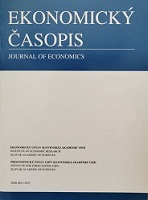What Drives Healthcare Expenditure Growth? Evidence from Central and Eastern European Economies
What Drives Healthcare Expenditure Growth? Evidence from Central and Eastern European Economies
Author(s): Milena Konatar, Snježana Kaštelan, Uršula Kaštelan, Jovan Đurašković, Milivoje RadovićSubject(s): Business Economy / Management, Micro-Economics, Regional Geography, Health and medicine and law
Published by: SAV - Slovenská akadémia vied - Ekonomický ústav SAV a Prognostický ústav SAV
Keywords: healthcare expenditures; CEE countries; panel ARDL modeling; income elasticity;
Summary/Abstract: The aim of this paper is to examine the determinants of healthcare expenditure in Central and Eastern Europe (CEE) countries. The study covers the period between the years 2000 and 2018. In our research, we implement error correction based on an autoregressive distributed lag (ARDL) model, with focus on the Pooled Mean Group (PMG) estimator. Our estimation results revealed that, in combination, health spending, income, medical progress, population ageing and fiscal capacity together form a statistically significant and stable long-term economic relationship. Our analysis indicates that healthcare spending responds to both short-term and long-term income changes. The obtained results support the prevailing view that health should not be considered a luxury good with an income elasticity close to unity. In the long term, medical progress and population ageing also significantly influence health spending, whilst these variables prove to be insignificant over the short term. Ultimately, government capacity is positively related to health spending dynamics.
Journal: Ekonomický časopis
- Issue Year: 69/2021
- Issue No: 07
- Page Range: 750-765
- Page Count: 16
- Language: English

